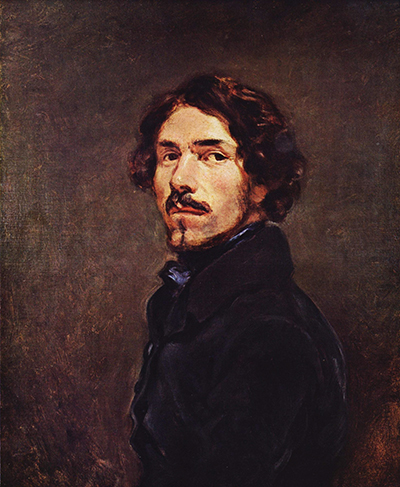This self portrait is dated at 1840, at which point the artist would have been around forty two years of age. He looks particularly dashing here, and we know from rare photographs of the artist that this is an accurate likeness.
The artist was not particularly well known for either his self-portraits or portraits within his career but he did successfully cover this genre from time to time with several memorable pieces. To see how he saw himself is also very informative for those documenting his life and also attempting to better understand the man himself. Whilst we have collated a collection of quotes from his lifetime, visual clues such as this are also particularly interesting. The painting that we find in front of us here is known to be in the collection of the Uffizi Gallery, Florence, Italy, though very little detail known about it has yet been translated into English. The facial expression is important in any self portrait, and in this painting from 1840 the artist looks confident, almost arrogant. As someone who kept a personal journal, there is plenty of information out there around his own character but most tend to focus, understandably, just on the extraordinary paintings that appeared over several decades.
There is no fuss within this work. The canvas is small, just around half a metre tall and wide. The background is also plain in the extreme, just a non-descript swipe of brown. His clothing is also simple, with a long black jacket and some touches of blue on its interior. This may have been a casually arranged piece, perhaps filling some time between larger projects when creative sparks entered the artist's mind. He was naturally handsome though at this young age did not have any facial marks as yet that could provide aesthetic interest, such as how you would have found within the career of Rembrandt, who is perhaps the most famous self portrait artist in history. The Dutchman gave us the likes of Self-Portrait with Beret and Turned-Up Collar, Self-Portrait with Two Circles and Self-Portrait as the Apostle Paul, though he is believed to have produced more than one hundred in total by the end of his career, including drawings, paintings and etchings.
Lighting was always important to this artist and here he darkens almost all of the scene, except for his own face. This allows the portrait to attract your focus immediately and the impact is increased by the fact that his own clothes are also very dark by nature. He sports a well groomed beard that would have been fashionable for the time, with a style that is relatively slim, with a carefully cut goatee moustache and a small line between mouth and his chin. He looks smart, sophisticated and well educated, all of which were actually true. This facial hair is specifically appropriate for Frenchmen of this period, generally for those of good standing who had the time spare to devote to their appearance.




